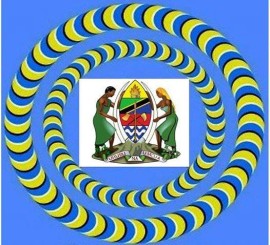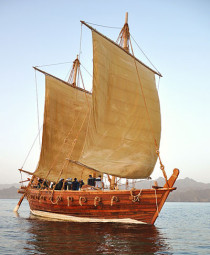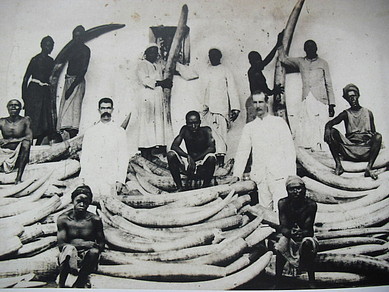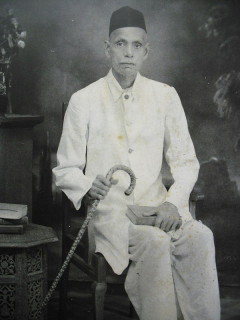Bata: Industry in East Africa
A HISTORY OF ACHIEVEMENT.
The name Bata originates from the founder of the organisation, Thomas Bata, whose son Thomas J. Bata, a Canadian citizen now heads the Western Bata Organisation.
The term “Western Bata Organisation” has a deep significance for Batamen the world over, particularly those of Czechoslovakian origin.
Thomas Bata’s first venture into mass production footwear was in Zlin in Czechoslovakia towards the end of the last century, after he had paid a visit to America and been inspired by the production-line techniques of Henry Ford and other industrialists. From this small beginning, on negligible capital, he built the largest shoe factory in the world in the short space of forty years, and prior to the Second World War was already well established in the U.K. and several other parts of the world.
After the tragic death of the founder, in an air crash in 1932, his son set about the mammoth task of reorganising after the
chaos of war in Europe. Hardly had things begun to take shape, however, than the Communist bloc dealt him the cruellest blow by expropriating all his factories without compensation. Many of the key
personnel were already overseas, and many more escaped before the Iron Curtain was finally sealed. With this small nucleus of dedicated men, and the scattered establishments in various parts of the
world, Thomas J. Bata started all over again to build up a shoe business, and so well has he succeeded that the Bata Organisation now far out shadows its original counterpart, and in 1962 produced
and sold more than 150,000,000 pairs of shoes, and also purchased over 12,000,000 pairs from other manufacturers. It employs at present over 62,000 people throughout the free
world.
The editor of “Industry in East Africa” was recently privileged to visit the Bata Shoe factory at Limuru, a fantastically
efficient organisation which provides employment to over a thousand Africans from every part of East Africa. He was greatly impressed with the smooth running of the factory, and particularly with
the way in which the workers appear to have adapted themselves to the conveyor-belt technique, which is used throughout this factory and appears well suited to the African
temperament.
3 MILLION PAIRS OF SHOES FOR EAST AFRICA
This is the staggering total of shoes made by Bata in East African since they first started production at Limuru in 1940. Every month the output of the E. A. Bata Shoe Company would fill 50 railway wagons, which is a fair-sized train-load. Since the opening of the Limuru factory in 1940, a further modern factory was created at Dar-es-Salaam in 1959; since then it has been extended considerably.
The East Africa Bata Shoe Company production units now comprise a Tannery, a Leather Shoe Factory, a Rubber and Canvas Shoe
Factory, a Cycle Tyre and Tube Factory and at Dar-es- Salaam the famous Darlon range of footwear and Twiga canvas shoes are produced. The output of these production units is disposed of through their
own marketing organisation, with over 65 retail shops situated throughout East Africa, and several thousand wholesale customers and dealers. In addition, the company has branches in Mauritius, where
there are 10 Bata shops, and in Aden where there are three.
BATA PROMOTES FOREIGN TRADE
An
ever-increasing percentage of the output is exported to countries all over the world, bringing in valuable foreign exchange. Even in such far-off places as Jamaica and the West Indies, East Africa
Bata products are well known whilst the finished products of the Bata Limuru Tannery are regularly shipped to the U. K. and often to the Western Hemisphere.
TECHNICIANS “ON TAP”
In this world-wide marketing, Bata Limuru is greatly assisted by the International Bata Organisation, which is well known in 74 different countries of the free world and served by 68 independent Bata companies. Altogether there are 57 Bata factories scattered over the western world, as well as rubber plantations, hide collecting centres, tanneries, textile mills and various auxiliary plants. This enables a great deal of interchange to take place, both of ideas, and products, and one of the most noteworthy aspects is the availability of technical skill and know-how within this vast organisation. When the cycle tyre and tube factory was started at Limuru, technicians were “borrowed” from Pakistan to get the snags “ironed out”, and they did the job so thoroughly that the local African Staff have had no difficulty in keeping up full output ever since. Likewise the installation and initial operation of the Darlon production unit was supervised by an expert loaned by the French Bata Organisation who were pioneers in such production. This family of Bata Companies operates in a true co-operative spirit, each ready to help the others, whether the need is for specialised machinery, technical skill and knowledge, a source of raw materials, or markets for finished products.
ABILITY COUNTS.
The Bata name is seen on over 4,000 retail shops, and more than 60,000 people are directly employed by Bata. Between them they
speak over thirty different languages. As evidence of the Bata policy of selecting employees according to ability, and irrespective of race or colour, Bata Limuru is a fair example. Among some 35
European employees, will be found at least 10 different nationalities, whilst the 1,000 or more Africans are drawn from almost every district of E. Africa.
TRAINING FOR PROGRESS.
To fit locally engaged personnel for higher levels of responsibility a number of training schemes have been developed, the most
notable of these being the Bata Technical Training School at Limuru which was founded in 1955 and provides a 2-year residential course designed to provide a steady stream of more educated and
technically proficient personnel who have the basic requirements for development and promotion to supervisory levels. Members of the earlier intakes to the B. T. S. have already reached senior
supervisory levels in the factory, and the present strength of 26 young lads can expect to do even better, thanks to improved methods and the experience of the instructional staff.
The age limit for entrants is 17, and the educational standard required is K. A. P. E. with credits in English and Maths. Students are soon sorted out into the stream for which they show the most
aptitude, and study such subjects as Rubber Technology, Leather Technology, Shoe Designing, Engineering and Chemistry, whilst at the same time improving their general level of
education.
Teaching methods are most up-to-date, and include the use of 16mm. film and slide projectors in specially equipped lecture rooms. Also provided is a library, dining room, and dormitory block, and students are encouraged to take part in community sports on the well- equipped sports field.
During their training, all expenses are borne by the company, including provision of all clothing and uniforms, school books, food and recreational facilities.
BIRTH OF A SALESMAN.
To ensure high standards of service to the customers, Bata salesmen are carefully selected and undergo rigorous training. Of the
65 Bata shops in East Africa, 38 are under African management. During these courses salesmen study shoe-fitting, Shoe Construction and Design, Administration, Staff Control, Sales promotion and
Display in both the practical and theoretical sense.
OVERSEAS TRAINING.
Specially selected employees who merit promotion to senior supervisory levels in both Sales and Production fields are sent on training courses overseas, in the U.K.. and various European countries, where participants gather from all over the world. It is not unusual on these courses for almost every member to be of a different nationality, and language problems sometimes have to be overcome by a special simultaneous translation installation.
The interchange of ideas between participants, coupled with lectures and demonstrations by experts in their fields, prove
invaluable, and progress after such a course is very rapid.
UTILIZING LOCAL RESOURCES.
Apart from the employment provided by Bata in their factories and shops, a considerable contribution is made to the economies of the countries in which they operate, by the processing of readily available local raw materials into finished manufactured products.
Into the hides and skins buying^ depot at Bata Limuru flow over 5,000 cow-hides per month, in addition to various other types of
skins, and all are destined to be turned into first class leather, most of which will eventually be turned into finished shoes in the Limuru factory. The remainder will probably be exported to other
Bata factories or independent buyers overseas.
In the Limuru factory every process is carried out, from raw hide to finished leather shoes, and such is the demand for leather products that a new and greatly enlarged tannery in now in the course of construction. The building which has served since 1940 is now not only too small, but is also considered old-fashioned, and in the interests of better working conditions the new building will be light and airy, also incorporating the latest developments in office and toilet facilities.
Here again is an example of Bata ingenuity. To avoid disruption of production, and unnecessary movement of heavy and in some
cases also delicate machinery, the new building is being erected over the old one. As soon as the new roof is completed, the old building (inside the new one) will be demolished and removed, leaving
the machinery and equipment standing, without the loss of a day’s production.
CONVEYOR BELT TECHNIQUE.
The finished leather, after leaving the tannery then starts on a long journey over a series of conveyor belts. Fetching and
carrying in this factory is cut to a minimum, and from start to finish, and even afterwards, the shoes travel V. I. P. fashion on conveyor belts.
First, batteries of stamping machines cut out the various components of the uppers and soles. These are then passed to the Sewing
Dept., where dozens of specialized Sewing machines assemble them into complete uppers. Each machine does one operation, before the conveyor carries the shoe on to the next. Assembling, lining,
back-stitching, binding eye-letting and dozens of other operations are all carried out at lightning speed, and the half-finished shoes are then transferred to another conveyor for the heavier
operations of lasting, sole and heel attaching and finishing.
On yet another conveyor every shoe is carefully checked for faults before boxing and packing into cartons, which are then
transported, again by overhead conveyor, to the Central Depot some 200 yards away. Roller conveyors even carry the cartons to and from the sealing machine, and finally out into the railway truck or
lorry. Shoes which have faults which render them unfit for wear are destroyed. Those with minor faults, which detract from their good appearance, but not from their wear-ability, are graded as
substandard and sold at reduced prices. The eagle eye of the checker rarely misses a fault, but being human, he sometimes “slips up”. In this case the shop staff will almost certainly spot the faulty
pair at a later date, and back they come to the factory. Where a fault is not visible to the eye, and is only found after the customer has worn the shoes, the Bata guarantee comes into effect. All
Bata products are guaranteed against defective material and workmanship, and every Bata shop manager is empowered to settle such a claim where there is no doubt in the matter. In border-line cases
the claim is returned to the factory for expert opinion, where re-pair or replacement may be advised.
MAN-MADE MATERIALS.
In addition to the traditional methods and materials, Bata Limuru and Dar-es- Salaam factories also produce shoes from artificial
man-made materials, termed "Chemical shoes”. City and Gaiety brands are already well-known for their smart appearance and long-wearing properties, and help to supplement the supply of more
conventional leather and canvas foot-wear.
TRAVEL ON BATA.
Recognising the popularity of the bicycle in East Africa as a means of transport preferable to walking, and not to be outdone,
Bata in 1957 opened the first factory for the production of cycle tyres and tubes in E. Africa, and its products have already been subjected to regular and prolonged tests by independent authorities
and have proved more than a match for their higher priced competitors.
OPENING FOR A NEW ENTERPRISE.
One of the great pities is that since the war the planting of rubber has been allowed to decline in E. Africa, and by far the
larger part of the raw rubber consumed in the Bata factories has to be imported. Full use is made of all locally available rubber, but this forms only a fraction of the requirements for shoes and
tyres made in E. Africa.
A happier story, however, is the development of textile production in E. Africa, which in recent years has played an
ever-increasing part in the production of materials for footwear. Likewise many thousands of cartons and boxes made in E. Africa are consumed daily in the Bata factories. Bata are also among the
largest consumers of electricity in E. Africa, and also utilize the service of the E. A. R. & H., having a special railway siding for the receipt of raw materials and despatch of finished
products.
Thomas J. Bata, Canadian Head of the organisation sums up in these words:
“The Bata Organisation has always been guided by the conviction that our industry should establish itself as part of the community, making its contribution to raising the standard of living and the long- range stability of the country in which it is located. Moreover, these enterprises should provide progressive opportunities for the development of local personnel. It is largely in this sense of mission that the secret of achievement lays.”







































